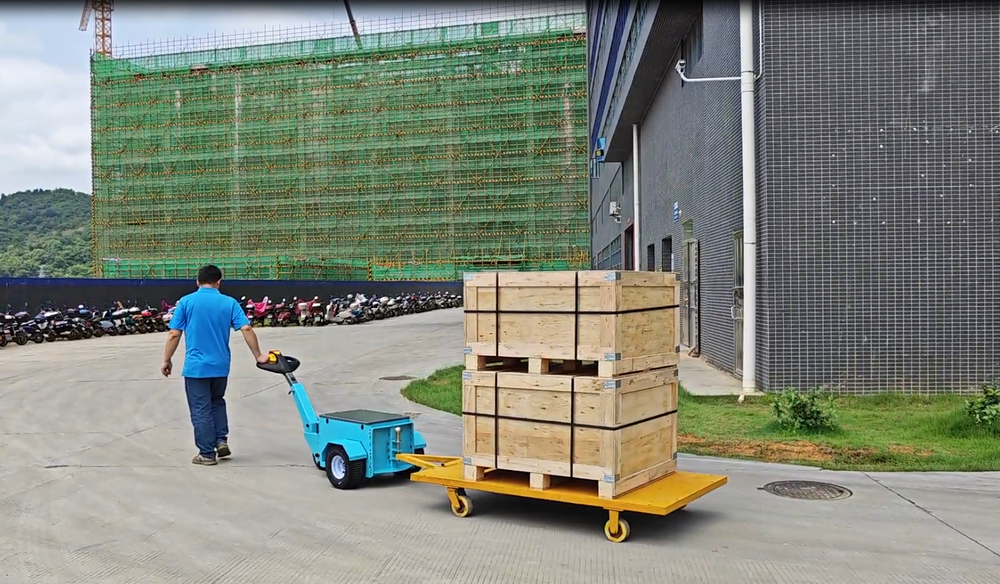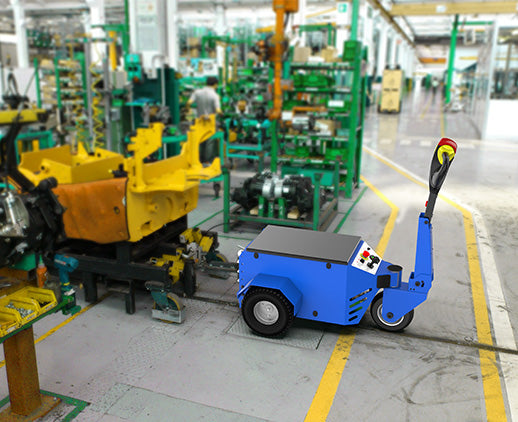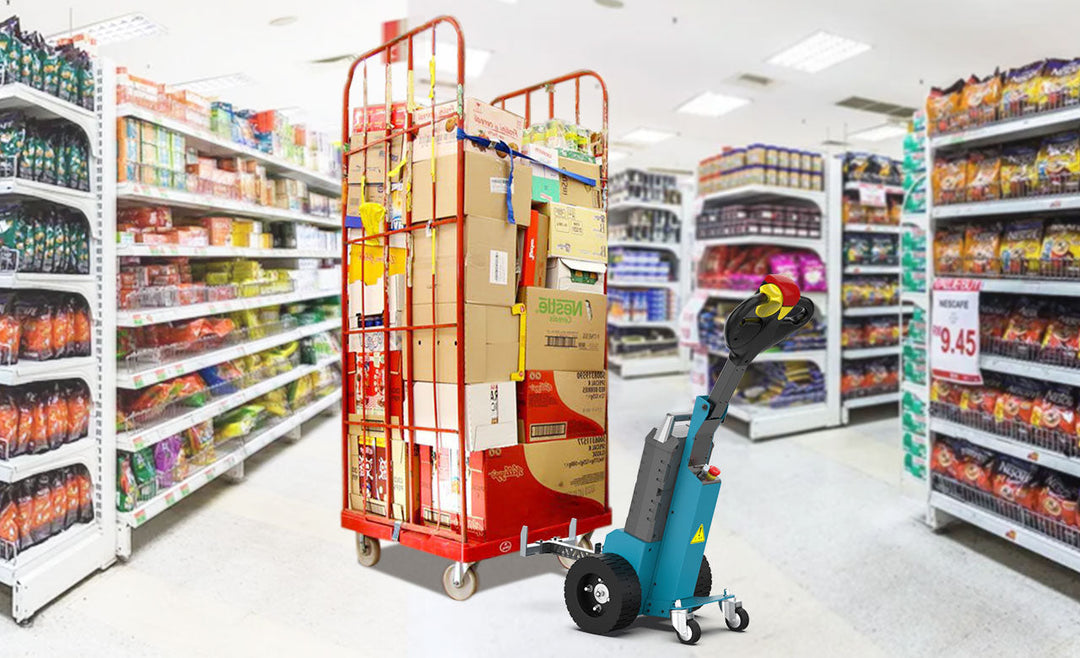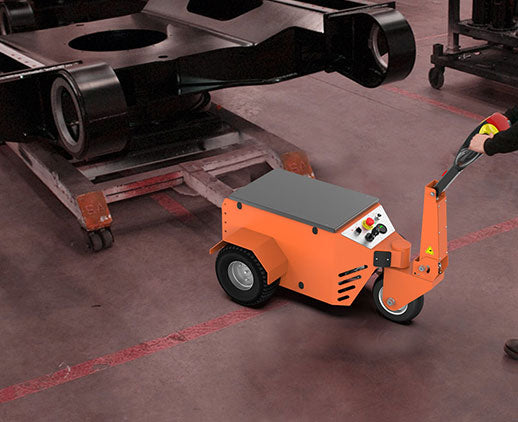Why are electric tugs the best solution for efficient heavy in factories
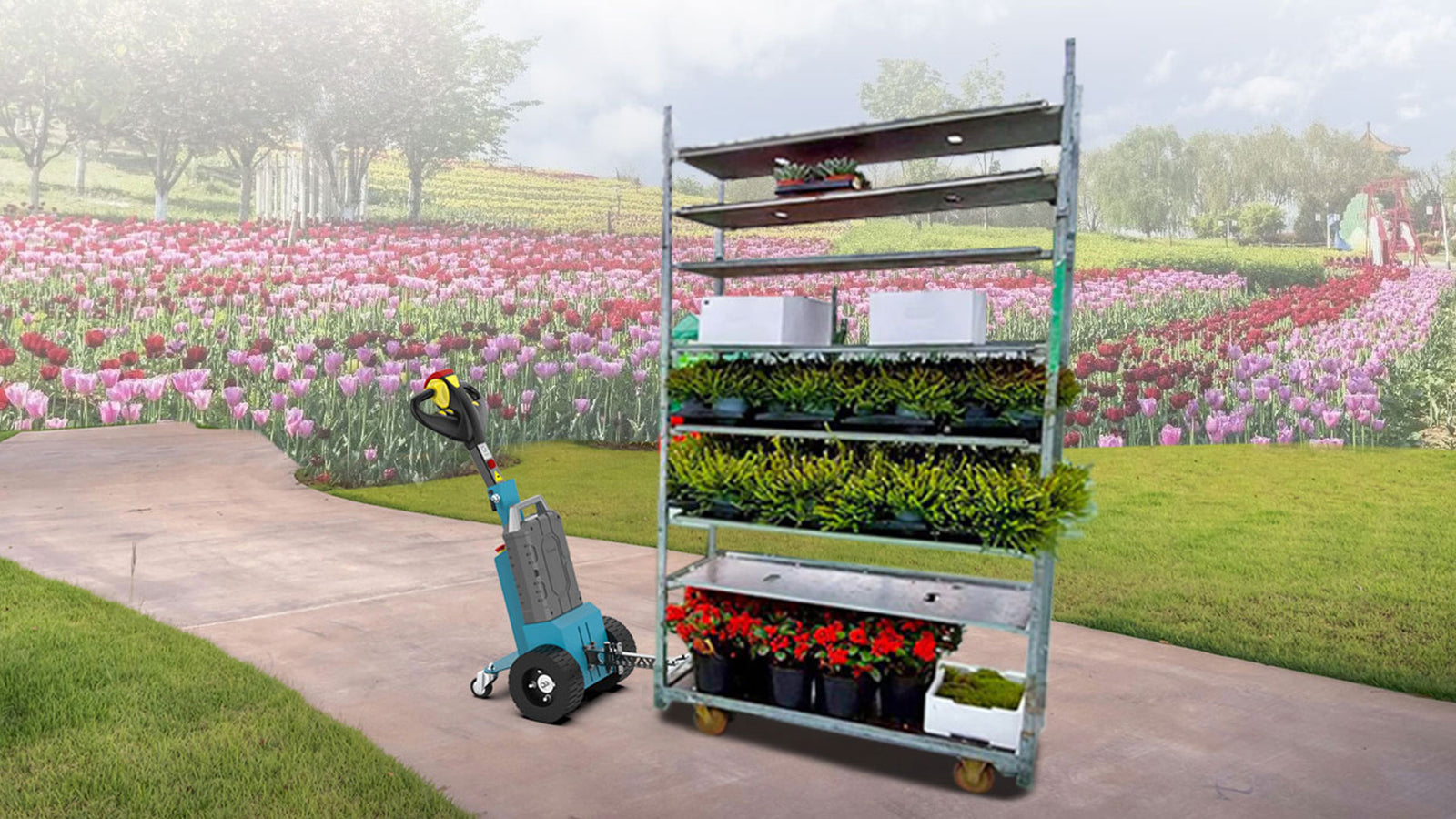
Electric tugs excel in heavy-duty operations in factories, achieving a braking distance within 1 meter when fully loaded with 3 tons. This reduces the braking distance by roughly 67% compared to traditional diesel equipment. Besides that, they decrease energy consumption by over 20% and annual maintenance costs by 30%, vastly improving safety while reducing costs.
Enhanced Safety
Safety is one of the top priorities in factories that handle heavy materials. Conventional forklifts and diesel-powered tugs contribute to accidents due to high inertia, blind spots, and complexity. The Bureau of Labor Statistics estimated that over 8,000 industrial accidents in 2019 were caused by improper forklift operations; nearly 15% of those incidents were severe enough to cause death. Electric tugs boast several design and performance-based safety advantages.
An electric drive system used in electric tugs is far more stable and controllable compared to an internal combustion engine. Electric tugs respond faster during operation and have stronger braking power; therefore, they are able to stop within a very short distance to avoid collisions caused by inertia. For example, a standard electric tug can control its braking distance within 1 meter when fully loaded with 3 tons, while a diesel forklift of the same weight usually has a braking distance of over 3 meters.
Equipped with all-electric hydraulic systems and smart control systems, electric tugs are designed to achieve precise electric steering and speed control, with positioning accuracy down to millimeters. This is particularly beneficial in very narrow aisles and complex shelf layouts in factories, effectively reducing the risk of collisions between equipment and personnel.
Ergonomic considerations are numerous in electric tugs. The handles and buttons are much closer to the natural posture of the human body, which significantly minimizes fatigue or distractions caused by long operation. They also feature automatic deceleration functions when they approach people or obstacles, further improving their safety features.
Improved Operational Efficiency
Efficiency in industrial production is directly related to production capacity and cost control. Compared with traditional handling equipment, electric tugs demonstrate outstanding performance in improving operational efficiency. Based on actual application test data, one electric tug can usually replace the workload of three traditional forklifts, increasing production capacity without adding more labor.
Electric tugs are highly developed and designed to ensure high efficiency in material handling. They boast very high flexibility and good maneuverability, easily adapting to the complicated and constantly changing production environment inside factories. For example, in narrow workshops or storage areas, electric tugs can undertake material transportation tasks with a much smaller turning radius and higher mobility. In such cases, traditional forklifts require larger turning spaces, adding more time to handling operations and increasing the possibility of collisions.
Designed to be modular, electric tugs allow for easy attachment and trailer replacement to handle a wide variety of cargo. For example, a regular electric tug fitted with hooks, pallets, roller tables, and other attachments can conduct a wide range of transport activities, from small parts to large mechanical equipment, easily and conveniently. This greatly reduces the waste of time due to equipment conversion and tool changes, truly achieving "one machine for multiple uses."
Electric tugs are equipped with high-performance lithium batteries and smart charging systems. Compared to the internal combustion engine of a traditional tug, which needs cooling after long continuous operation, an electric tug can continue to work after a short charging time. Taking an electric tug from a well-known brand as an example, up to 8 hours of full-load battery life can be achieved, and fast charging can be completed in 2 hours. This means that electric tugs can operate around the clock in two-shift or three-shift factories, greatly optimizing overall handling efficiency.
Lower Total Cost of Ownership
Total Cost of Ownership (TCO) is an important factor for factories when choosing handling equipment. Although the purchase cost of an electric tug is slightly higher than that of traditional internal combustion equipment, long-term savings are considerable. According to calculations, the TCO of an electric tug is usually 20% to 30% lower than that of traditional equipment.
Energy consumption clearly shows the advantages of an electric tug. They employ electric drives, which are characterized by high energy efficiency and no fuel consumption. For example, with daily usage of 8 hours for 300 days a year, the annual electricity cost for an electric tug is estimated at around 10,000 RMB, while for classic diesel equipment, it is around 30,000 RMB per year. This means factories can save at least 20,000 RMB per year in operating costs.
Maintenance costs are also lower than those of traditional equipment since an electric tug does not have internal combustion engines and complex transmission systems; hence, there is much less mechanical wear, with no need for regular oil changes or fuel filter replacements. According to an industrial equipment leasing company, the annual maintenance cost of an electric tug is about 5,000 RMB, while the annual maintenance cost for a traditional diesel forklift is usually as high as 15,000 RMB. Fewer maintenance sessions and lower costs imply less equipment downtime and higher utilization.
The lifespan of electric tugs is usually longer than that of traditional equipment. While traditional internal combustion engine equipment can last for 8–10 years at most, under normal use an electric tug can have a lifespan of up to 15 years or longer. This means huge savings for factories when renewing their fleets, which decreases the total cost of ownership even further.
Flexibility and Customization
Operational needs within factories vary greatly. The cargo type and production environment require different handling equipment. Traditional forklifts and diesel-powered machinery often perform poorly in certain special scenarios due to limitations in structure and power. Electric tugs, however, have high flexibility in design and customization capability, meeting almost all types of factory operational requirements.
Attachments for electric tugs can be interchanged very quickly for different handling jobs. Some factories need to transfer large mechanical parts weighing over 5 tons, which traditional forklifts often cannot lift stably. These special cargos can be easily handled with hooks or custom platforms by electric tugs without damaging the floor or the goods themselves.
In actual site conditions, the electric tug can be adjusted by adding anti-skid wheels, increasing tire size, or adding load supports. This is particularly effective in extreme production conditions, such as on wet floors or in workshops with steep slopes. In a customized project for an automobile manufacturer, a well-known domestic electric tug brand added anti-slip rubber coating and a custom suspension system, increasing the device's climbing ability to 15 degrees, while traditional equipment couldn't operate in that environment at all.
Electric tugs can also work with the intelligent management systems of factories to achieve a higher level of automation and intelligent operation. With the installation of intelligent navigation systems and automatic path-planning software, electric tugs can complete handling tasks autonomously without manual intervention, greatly improving the automation level of internal logistics within factories. Such intelligent applications are especially suitable for high-frequency handling scenarios, such as production line material transportation and warehousing of finished products in large factories.
Reduced Employee Fatigue
Employees are the most important asset for factories. Heavy-duty handling equipment in traditional factories is often complicated to operate, and the environment is harsh, which affects employees' physical health and mental state. According to statistics from a domestic manufacturing research institution, over 40% of factory workers develop shoulder and waist pains due to long-term operation of heavy machinery, directly impacting their enthusiasm toward work and productivity.
Electric tugs drastically decrease personnel fatigue and raise overall job satisfaction in many ways. The operating system of an electric tug is simpler: it allows operators to perform all handling tasks with just a handle and buttons, without frequent heavy labor or complicated driving skills. Even new employees can get started quickly after simple training.
The low noise and zero-emission features greatly improve the factory working environment. Traditional diesel equipment operates at noise levels normally above 80 decibels, but an electric tug generally operates below 50 decibels. This noise level has almost no impact on human hearing, allowing employees to work in a quieter environment and reducing fatigue and emotional fluctuations caused by noise.
The safety designs of electric tugs make employees feel much more comfortable while working. Accidents with traditional equipment often occur when operating in narrow spaces or blind spots, increasing operators' psychological pressure. Intelligent safety systems in electric tugs, such as automatic obstacle avoidance and speed limit functions, effectively avoid such risks, providing a safe and comfortable working environment for employees.
Related Products:




